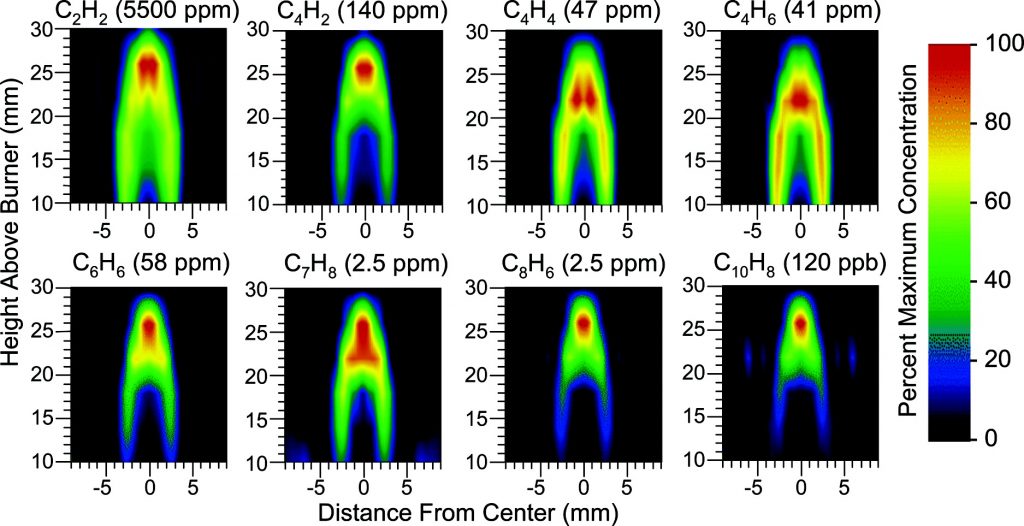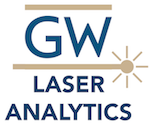Detection of Trace Hydrocarbons in Flames Using Direct Sampling Mass Spectrometry Coupled with Multilinear Regression Analysis
DOI: 10.1021/ac1003823

A technique for the determination of species’ concentrations from the molecular growth regions of flames is presented. Samples are obtained by microprobe extraction from a nitrogen-diluted, methane/air, nonpremixed laminar flame supported on a coannular burner. Quantification of measurements is accomplished by doping the flame’s fuel flow with argon at a level to match that in the laboratory’s air. A library of 70 eV fragmentation patterns for several flame species is used in conjunction with a simplex algorithm to analyze mass spectra obtained at each flame location. Each fragmentation pattern is normalized for its integrated intensity and its ionization cross-section relative to argon. This technique provided sub-part-per-million sensitivity of a large range of major and minor carbon-containing species ranging in size from C2 to C12 hydrocarbons. This flame can be acoustically forced to oscillate at a frequency emulating natural flame flickering behavior. Time-resolved measurements are obtained using a modified quartz microprobe synchronized to open and close with the flame oscillations. The near real-time sampling and analysis time and the relatively high sensitivity make this technique preferable to other extraction-based flame measurements.
